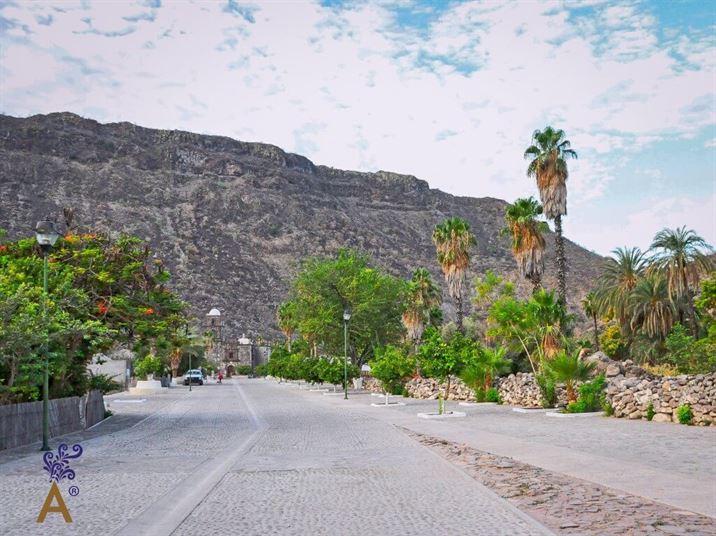- Around the year 1700, in the Sierra de la Giganta, among palm trees on the banks of a stream in the San Javier ranch, about 20 miles from Loreto, events happened that cannot be forgotten when we speak today of good eating.
After the mass was completed that was celebrated and heard by the Indians, Father Ugarte distributed pozole to those who had to work, either to remove bushes and stones to prepare the ground for planting or make dams and ditches to irrigate the land… Ugarte was not only the architect, but the builder, carpenter and everything else. Through his example, these ancient people became converts. He was the first to go and work the stones needed to build the mission, he was the first to step in the mud, digging the earth and ordering materials… a gentleman reduced to a heavy and laborious life… raised between the delights of an affluent home and buried in a dark and remote solitude, but willing to give all his sublime talent for more than 30 years. (Prahrasing Francisco Jacier Clavijero).
If you visit the town where this magnificent mission was built, you can see where those hills full of bushes and stones became well-cultivated fields. Where wheat, corn and various types of vegetables and fruit trees brought from Mexico were grown and where he planted a vineyard, the first on the peninsula.
In San Javier, the excellent wine was served at all the masses that were celebrated in the missions, and the excess was sent to Spain. The harvest of wheat and corn, although not enough for consumption, help to cover the basic needs. In 1707, a general drought struck the northwest region. It was especially difficult in Sonora and Sinaloa. Father Ugarte wrote a letter to the prosecutor of Guadalajara dated June 9…
- “… We’ve been here two months, eating good bread from our harvest together with others… while the poor of Sonora and Sinaloa starve to death. Who would believe it?”
Today in San Javier, the irrigation channels that Father Ugarte designed and built with the old settlers to water the fields can still be seen. On top of that, look for the old olive trees that are still standing. The inhabitants in the area say the trees have been there for more than 150 years.
When you walk through the village from the main entrance of the mission, you will see locals selling certain traditional dishes, sweets, and the famous seasoned olives.
This community, as well as many others in the South Californian region, is an example of the type of natural farming that is known today as organic. Ingredients from organic farms can be found in the cuisine throughout the peninsula. In any South Californian town, you will surely find delicious dishes with the taste of regional ingredients, such as those found in empanadas, beef, fish and lobster dishes, machaca, burritos, and tamales. The ingredients emanating from this land have been grown in commercial and home gardens for more than 300 years. They are delivered from here to the kitchens of families or the exquisite restaurants of this wonderful land.
Armando Trasviña Taylor, a good South Californian, wrote in one of his poems in the Sudcalifornian Tamal:
- The tamales are born tied
from a hot pot,
for the kidney beans
guarded by an ardent champurrado.
In this dough shelter
the tamal leaf packs
olives, potatoes and raisins,
cow neck or chest.
There are other communities in the perfumed land of Baja California Sur that offer many elements of rich cuisines. San Ignacio, Mulege and La Purisima are beautiful oases that produce dates and a diversity of products such as breads, cakes and nieves.






